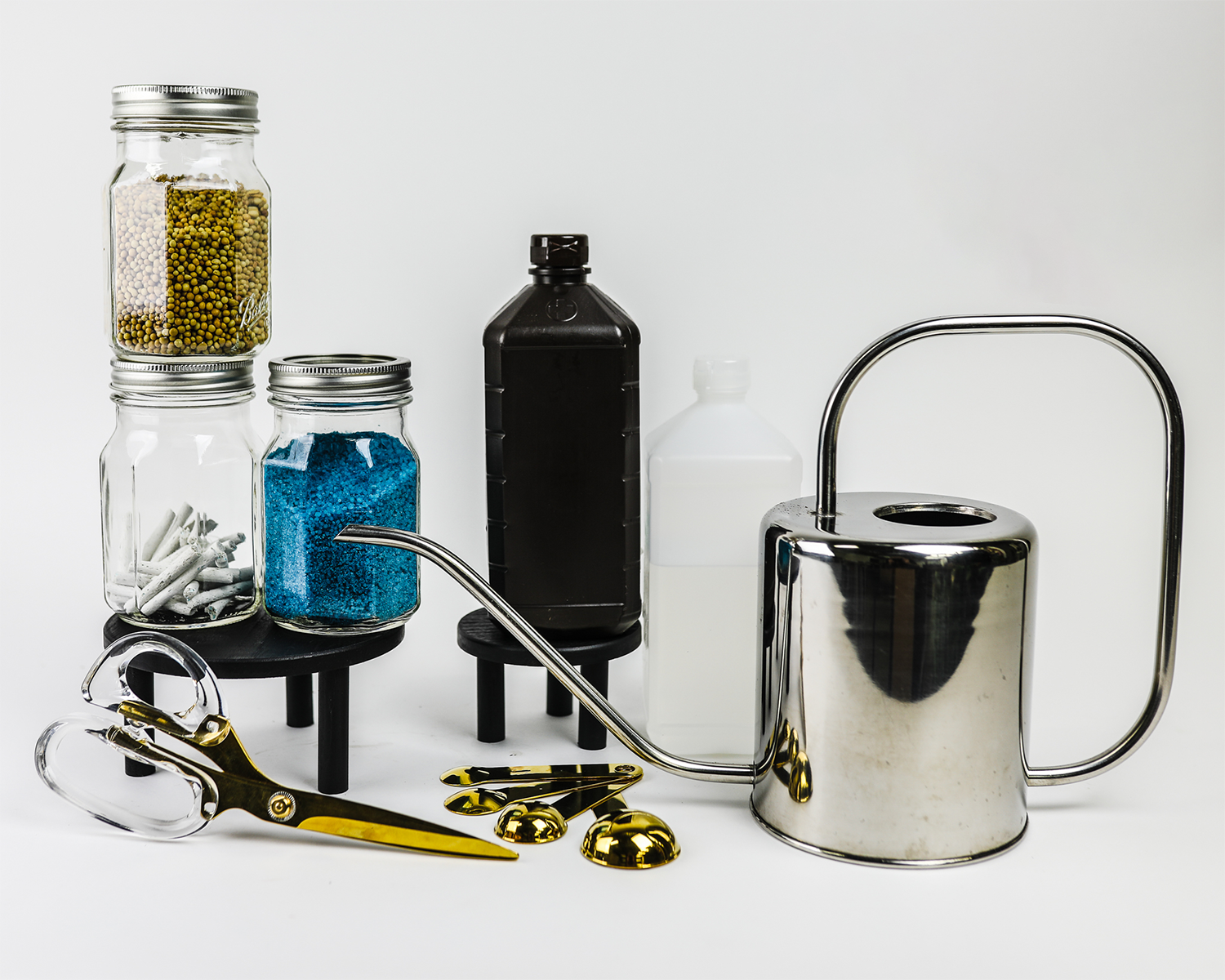Planting for Success: Fertilizing 101
As those daytime temperatures rise and the sun stays in the sky later each night, you may start to notice your houseplants making new leaves and roots. Spring is here, which means our plants are in their growing season! One of the ways we can best support our plant babies as they wake up is by fertilizing them. Fertilizer is an important part of plant care as it provides your growing plants with the nutrients they need to continue to thrive! But how do you know how much fertilizer to give a plant? How often do they need fertilizer? It all depends on the plant, the fertilizer you choose, and you!
When to start fertilizing
It is best to wait to fertilize your plants until they are in their growing season. A plant’s growing season will depend on what type of plant it is, the environmental conditions inside your home, and the light they are getting from the sun. In the winter, days are shorter, leaving plants with fewer hours that they are able to use sunlight to photosynthesize and grow. Indoors, our houses are usually drier in the winter, which will impact plant growth as well. Even those plants that seem to keep growing in the winter, or those that we supply with supplemental grow lights, will typically experience a slowdown in growth during the winter. For this reason, we hold off on fertilizing. When a plant has less light to work with, it drinks less water and uses fewer nutrients, and having fertilizer hanging out on a plant’s roots is more likely to damage them. Once you start seeing new growth, your plant is actively growing and could use the boost that fertilizer can give!
Choosing a fertilizer
Purchasing fertilizer can be overwhelming. There are a few things to know about how fertilizers are labeled and what different types of fertilizers are out there before choosing the perfect one for you and your plants!
Fertilizers are all labeled with three numbers that indicate their strength and they always refer to the ratio N:P:K. Nitrogen (N) is responsible for green growth, usually in leaves. Phosphorus (P) is responsible for root, flower, and fruit development. Potassium (K) is important in many overall functions of a plant. A fertilizer that is 20:20:20, for example, has equal amounts of Nitrogen, Phosphorus, and Potassium. Since plants need more than just N, P, and K to thrive, some fertilizers will also provide micronutrients like Calcium, Magnesium, Boron, Iron, and Manganese.
The NPK numbers also refer to the amount of nutrients that are available immediately to a plant. Your organic fertilizers will have lower NPK numbers because organic materials take a bit longer to break down. It doesn’t mean that organic fertilizers are less potent, just that they will generally remain in your soil to release more nutrients over time. Fertilizers with higher numbers are typically synthetic fertilizers with nutrients that can be accessed by the plant immediately. These fertilizers offer a big early boost of nutrients but might fade faster than an organic fertilizer. Liquid fertilizers are often in concentrated liquid or powder forms to be diluted and watered into your plants, which your plants can absorb quickly through their roots. Liquids will need to be reapplied more frequently. Pelleted fertilizer or fertilizer stakes release small amounts of nutrients each time you water your plant, which is why they are only applied a couple of times a year.
Which fertilizer you choose will depend on the plant. Certain plants will do much better if they are given fertilizers specifically for them, like orchids, African violets, palms, cacti, and succulents. Others will do just fine with a general-purpose fertilizer, with the stipulation that indoor plants will need about half the concentration of fertilizer than outdoor plants. Always follow the instructions on your fertilizer container, noting that many bottles will give you specific measurements and recommendations for indoor plants. When in doubt, get a fertilizer that specifies its use for indoor plants!
How often to fertilize
Once again, the answer to this question will lie in what kind of plant you have, how often it is watered, how quickly it grows, and more. Many of your foliage houseplants like Pothos, Monstera, Philodendron, and Ficus are fast-growing and are being watered more frequently. During the growing season, you can water these plants about once a month, always keeping an eye out for signs of over-fertilization. In general, plants should not be fertilized every time they are watered as it may lead to salt buildup and fertilizer burn. Others like cacti, succulents, and slow-growing plants like ZZs and Sansevieria are a lot easier to damage with fertilizer and need either cactus or more diluted fertilizer.
Ultimately, the best way to fertilize and care for your plants is to do your research, follow instructions, and watch your plants for signs of stress!
Do you have any questions about fertilizing your Max and Miles plants? Reach out to us on Facebook or Instagram @maxandmilesplants!








